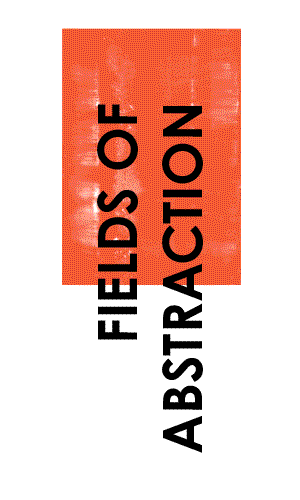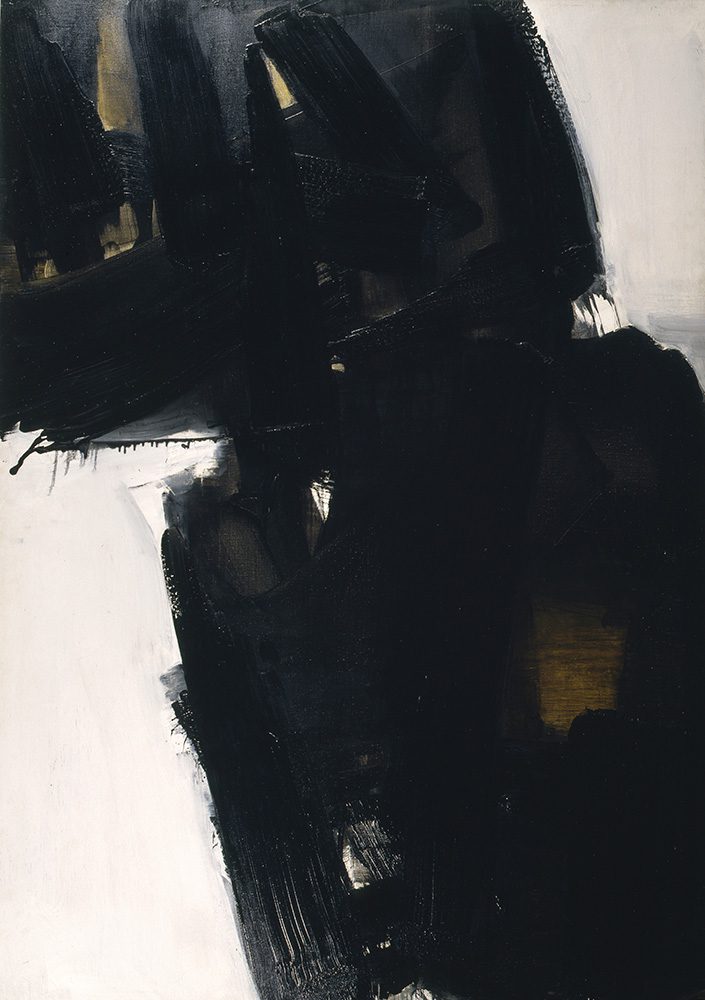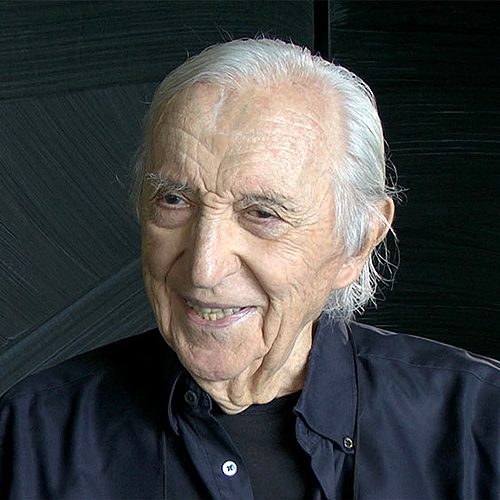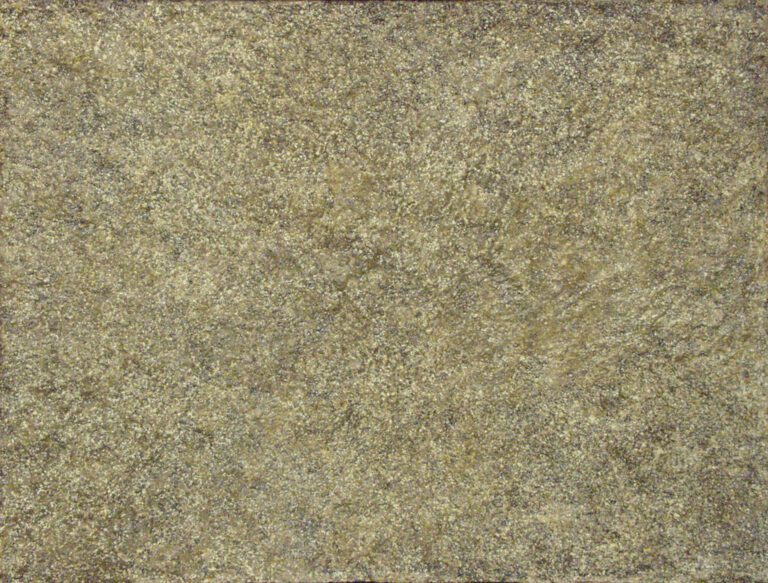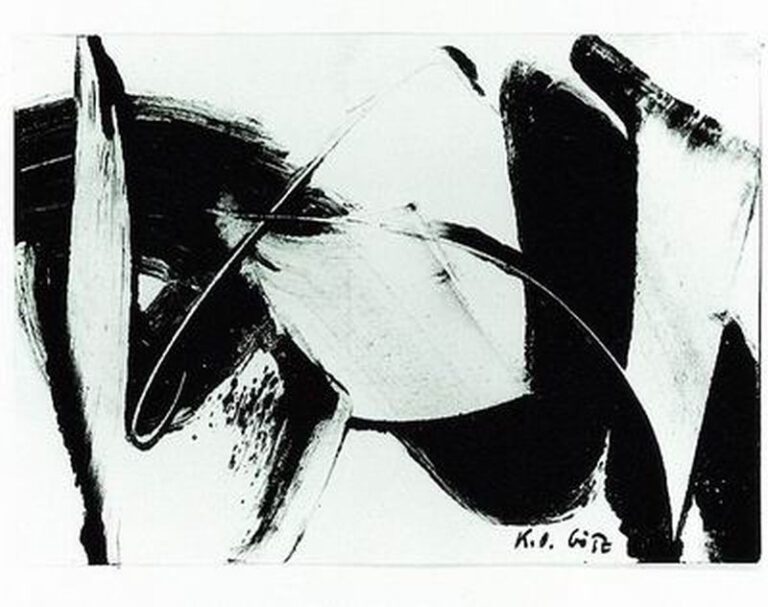Born in a small city in southern France, Pierre Soulages was deeply influenced by the works of Cézanne and Picasso during a brief sojourn in Paris, which revealed to him the power of modern art. After serving in the French army during World War II, he devoted his life to art.
The year 1979 marked a turning point in Soulages’ career, when he initiated his series of mono-pigmentary paintings “Outrenoir” (“beyond black”). “I have always liked this color for its power, for its pictorial action. . . . You put black next to dark, suddenly the dark lights up. It is very active.” Throughout his career Soulages was fascinated by darkness, exploring diverse and complex textures of black produced by absorption or refraction of light. Black progressively stops being black and starts reflecting light, the result depending on the position of the viewer: “There are nuances between the blacks. I paint with black but I’m working with light. I’m really working with the light more than with the paint.”
The title of Painting 202 x 143 cm, 21 Dec. 64 – a technical formula referring to the work’s technique, dimensions, and date – expresses a refusal to orient the spectator and an invitation to free interpretation. With its black structure on a white background, the composition – reminiscent of oriental calligraphy – is characterized by broad and heavy brushstrokes applied with large arm and shoulder gestures. Employing a type of paint commonly used by house painters rather than artists, Soulages retains within the black shape a few light gaps, ocher hints that imbue the work with a chiaroscuro effect.
Soulages uses objects such as spoons, tiny rakes, and bits of rubber to work away at the painting, often scraping, digging or etching to create a smooth or rough surface. Bold cuts, vertical and horizontal lines, and crevasses break up the surface of the painting, disrupting the uniformity of the black. The highly cadenced work reveals a balancing force in the disposition of the shapes (upper left versus lower right) and in the opposition between dark and light areas, opaque and transparent shades, matt and brilliant sections, thin and thick layers, and vertical and horizontal brushstrokes. This harmonious balance reveals an intuitive and direct creative process, devoid of pre-planning: As the artist put it, “It is what I do that teaches me what I am looking for. Painting always comes before thinking.”
Sarah Benshushan and Adina Kamien
